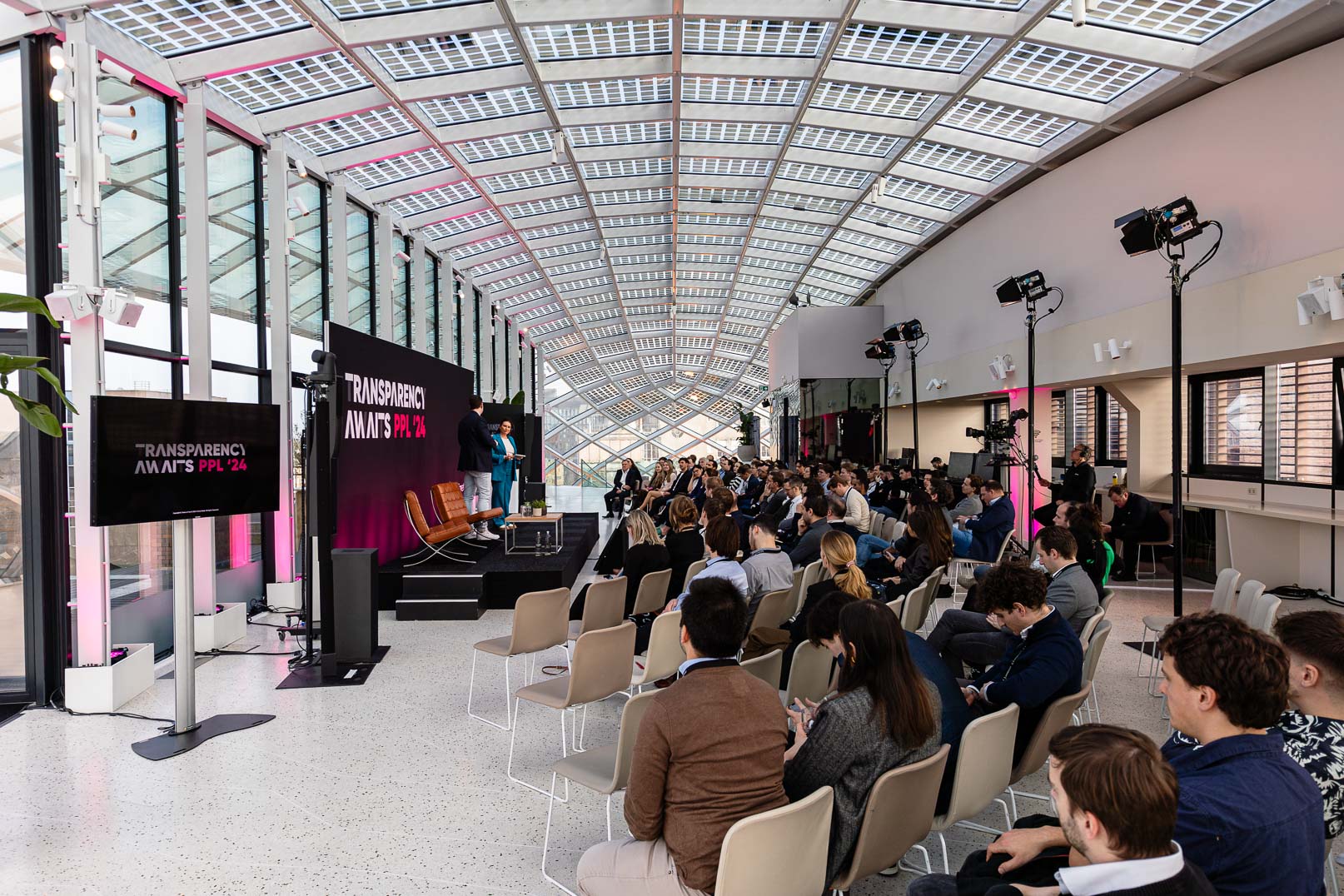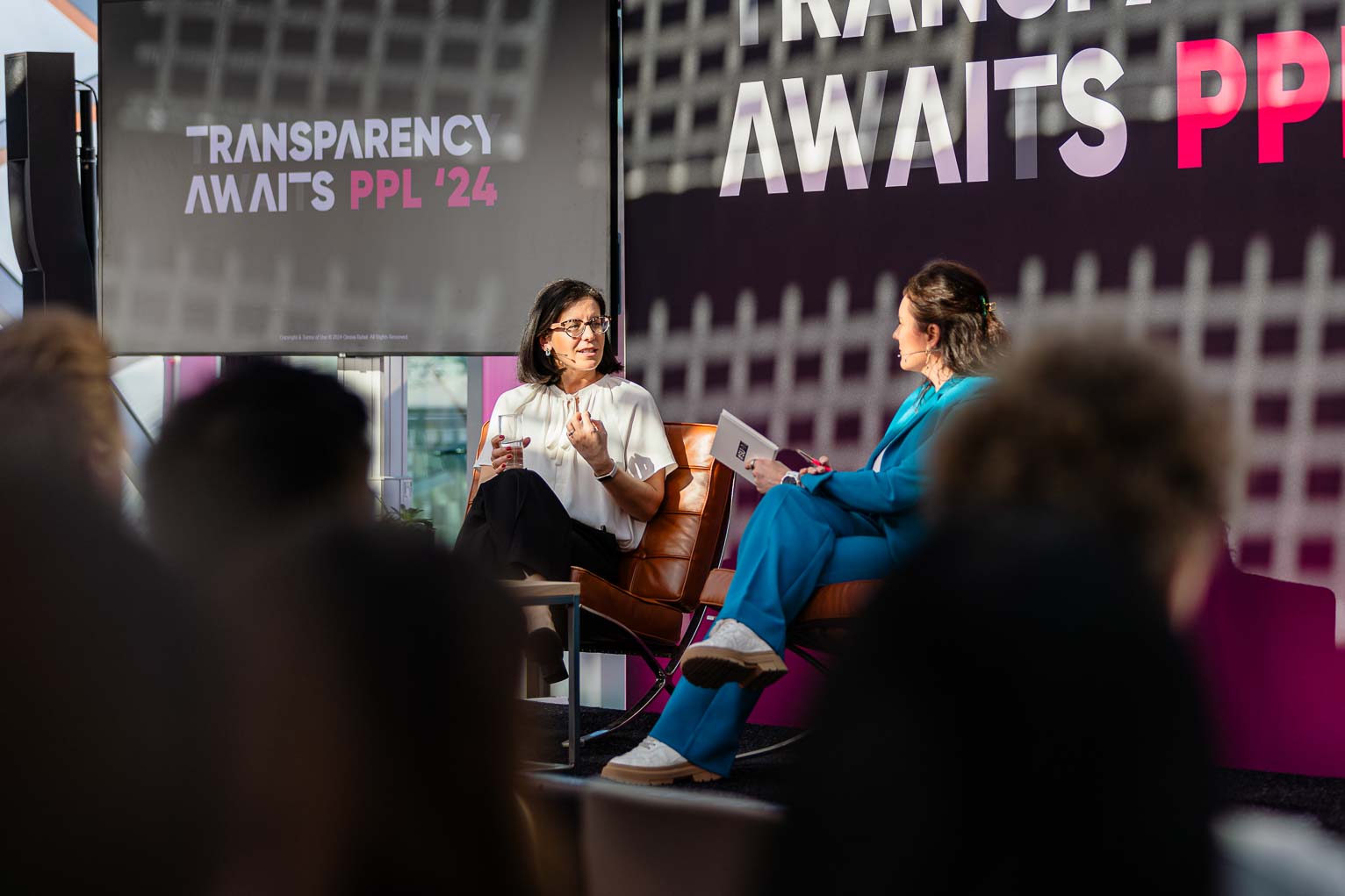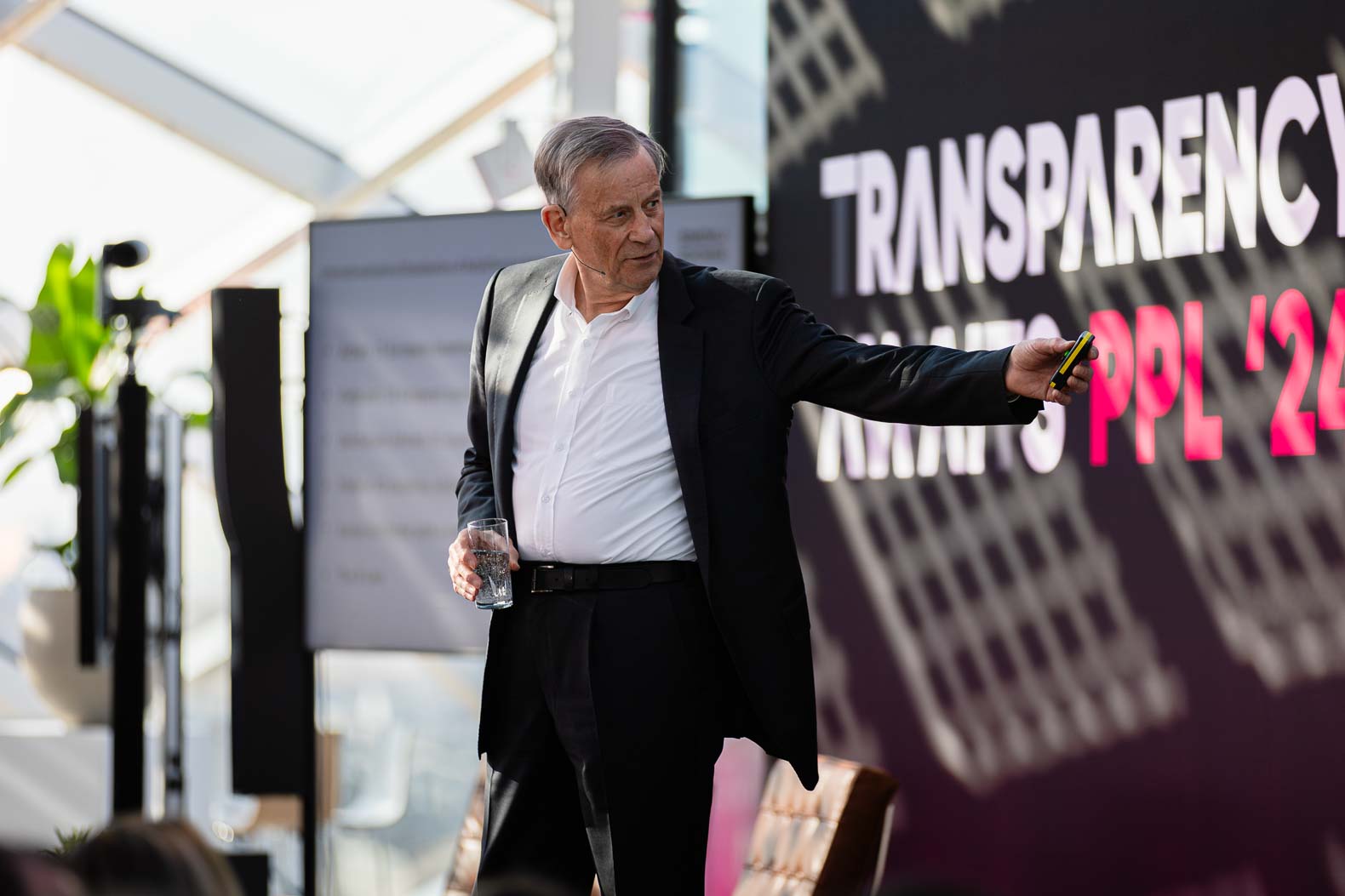Price Points Live 2024
From Insight To Action
Amsterdam, a renowned hub of innovation and global business, recently hosted the latest edition of Price Points Live.
This full-day event, held on the 7th of March, illuminated the ever-evolving world of eCommerce with a focus on transparency.

Price Points Live 2024
We were thrilled to welcome attendees for an enlightening journey into the heart of eCommerce with our recurring Price Points Live event, dedicated to illuminate the often murky world of retail eCommerce. Held within the architectural wonder that is Capital C, formerly known as the Diamond Exchange, attendees found themselves under a breathtaking transparent glass dome - a fitting symbol for the topic of transparency.
Guided by the effervescent Suyin Aerts, this year's gathering elevated the conversation with keynote presentations and an engaging and interactive Q&A panel to inspire action and catalyze industry growth.
Unlocking Success: Insights from Price Points Live
Experience the future of retail with Price Points Live, where industry-leading keynote speakers shared invaluable insights into pricing transparency in e-commerce as well as several other topics including pricing insights, and marketing tactics. From uncovering the latest trends to exploring innovative pricing models, our event provided attendees with actionable strategies to stay ahead in today's competitive market. Whether you're a seasoned pricing professional or new to the world of dynamic pricing, our event offered something for everyone.
Missed the event
We have great news for those eager to revisit the rich discussions and breakthrough insights. In the coming weeks, the full version of the event, all questions and answers from individual sessions, and the panel discussions will be made available, providing an invaluable resource for anyone looking to deepen their understanding of eCommerce trends and strategies.
Stay tuned for the release of this comprehensive coverage, which promises to be an essential tool for industry professionals seeking to navigate the complexities of the eCommerce landscape. Further details, including how to access the content, will be shared soon.

Price Points Live 2024 Speakers

Natalie
Berg
Retail Analyst | Author | Podcast Host

Dr. Doug
Mattheus
Business Consultant | Adjunct University Marketing Professor | Executive Education Facilitator
His professional acumen is further enhanced by a Doctorate in Business from the University of Phoenix, USA, showcasing his deep commitment and understanding of the business world.

Cor
Verhoeven
Group Product Manager at bol.

Sander
Roose
Founder & CEO

Prof. Hermann
Simon
Founder & Honorary Chairman Simon-Kucher

Gerrie
Smits
Author | Facilitator | Speaker
In times of hyper-fast tech developments, digital transformation and permachange, there is one solid, constant element: the customers. Also known as: people. And it’s the companies that truly understand their customers that will outlive any tech hype or (terrible word alert) disruption. The key thing to being successful in these challenging times is putting the customer central. But customer centricity is not defining a socio-demographic target audience but truly understanding the needs of the people you work for.
Question & Answers
We're excited to share the Q&A session from Price Points Live 2024 where our panel of experts responded to questions directly from the audience. Gain deeper insights and clarity on a wide array of eCommerce topics that are relevant and important to you. Whether you're curious about dynamic pricing, marketing strategies, or the future of online retail, this Q&A offers valuable answers and perspectives.
You shared that Omnia has been doing dynamic pricing implementions for over 12 years. How has dynamic pricing changed over those years?
"In the early years, there was only a need in the most mature categories; now, dynamic pricing is necessary in almost all categories. We also served only retailers in the past; now, brands are also using dynamic pricing to make sure they move in line with the market and prevent insult pricing. Then with regards to dynamic pricing approaches, now that the ability to run complex pricing strategies has become more mainstream, there is a need to reduce the complexity and keep control". Sander Roose
And how about the international dimension, do you see major difference between countries?
Yes there are definitely differences between countries. For example, within Europe, very broadly speaking, there is a divide between Northern and Southern Europe where the North is further ahead on digital and e-commerce, and you also notice this in dynamic pricing maturity.
But as said, there are differences between categories, so at Omnia, we tend to look at it in category-country combinations: dynamic pricing in electronics started to take off 12 years ago in the Netherlands, while this was only a couple of years ago in Greece. Sander Roose
Natalie talked about the many touchpoints in the purchase journey. How do your customers approach pricing in that omnichannel world that includes physical stores?
"You first need to decide on whether our not to have uniform prices across online and offline. Our software can facilitate both, of course, but I do believe consumers expect uniform prices across all touchpoints of a retailer or brands selling D2C. Then, changing prices in physical stores becomes an operation question.
One way to do this is to use electronic shelf labels (ESLs). That’s a big upfront investment but saves on manual work and gives you the same flexibility as changing prices online. Nowadays, there are also possibilities for leasing electronic shelf labels. But many of our omnichannel customers don’t have ESLs.
Then, there are still possibilities. E.g. always recalculating optimal price points across your full assortment frequently but only sending the most impactful price changes to physical stores. Or simply allowing online prices to change more frequently and allow shopper to buy at the online price point if they raise it. Or don’t print price tags and make it easy for shopper to quickly look up the price of the particular product online (e.g. QR code or similar approach)". Sander Roose
Cor talked about pricing of sellers on the Bol marketplace. Do your customers also struggle with pricing on marketplaces, next to the pricing in their own stores?
"Yes, with the marketplaces becoming more important, this is an emerging use case in our customer base. The interesting case here is that, typically, channel management software is used to advertise products on marketplaces, as Bol.com, at max, gives the users data about the price points on the marketplace itself.
That can mean that you think you are priced competitively on Bol.com, but there could be a much cheaper offer on, e.g. amazon.nl, leading you to have hardly any sales.
However, Omnia can deliver pricing data for the full market, which enables you to also make smarter decisions regarding pricing on Bol. And it will also make Cor happier as it prevents insulting pricing". Sander Roose
What is, for you, the most important change that you saw in the past five years?
The most significant change over the past five years has been the rapid digital transformation catalysed by the pandemic. The necessity to adapt quickly to online channels and innovate within a short timeframe has been remarkable. Additionally, there has been a significant focus on the role and purpose of physical retail stores. Despite the rise of online shopping, there has been a resurgence in the importance of the in-store experience post-COVID, highlighting the enduring value of brick-and-mortar stores.
You mentioned retail Darwinism. What about those back in the days of the pandemic thought, all this online is never going to happen. Will they be able in the future to run fast enough and make it till the end or will they really not be there anymore in your retail Darwinism world?
In the world of retail Darwinism, standing still is the most dangerous choice. Take Body Shop, for instance, a pioneer in ethical beauty. While they were ahead of their time with their environmental and social justice initiatives, they failed to innovate and evolve. As a result, they were surpassed by newer, disruptive brands. Being an early mover isn't enough; continuous evolution is essential. It's crucial to keep pace with customer expectations and trends to remain relevant in the ever-changing retail landscape.
How can you motivate the teams to start working on all the new technologies and not only start working, but not only be a trailblazer, but stay ahead of things?
Motivating teams to embrace new technologies and stay ahead of the curve involves more than just providing them with tools; it requires a cultural shift and rethinking how we measure success in physical retail. Equipping associates with digital tools and training is essential, but so is recognising the evolving role of the store. Success metrics need to go beyond traditional measures like sales growth to include factors like staff satisfaction, tech-enabled customer interactions, and online order fulfillment. Dwell time in-store and other innovative measures can provide valuable insights into the evolving nature of physical retail. It's about embracing change and adopting new ways of thinking about retail success.
How does the trend towards individualized shopping preferences affect retailers, especially considering that data from one platform may not accurately reflect shopping behavior on another?
In the era of individualised shopping preferences, retailers face the challenge of catering to diverse consumer needs across different contexts. Data plays a crucial role in informing decision-making, whether it's analysing in-store or online shopping behaviors. However, the traditional approach of categorising shoppers into distinct segments no longer applies, as the same individual may seek varying levels of technology and assistance based on specific situations. For instance, a shopper might prioritise efficiency and automation during a quick grocery run but prefer personalised human interaction during leisurely browsing sessions. The key for retailers lies in deeply understanding their customers and adapting their offerings accordingly to deliver exceptional experiences. Yet, achieving seamless integration across different touchpoints remains a significant hurdle. While some retailers have excelled in unifying online and in-store experiences, there's still considerable room for improvement across the industry. Looking ahead, the focus will be on further enhancing the overall shopping experience both online and offline to meet evolving consumer expectations.
Is that something that you see, that we can’t decide too fast on putting people in boxes because of their age, gender, or nationality? Do you see a big difference in different sides of the world? US versus Europe, for example?
As customers, our preferences have become increasingly individualised, posing a challenge for retailers who can no longer rely on age, gender, or nationality to categorise consumers. For example, assumptions about older shoppers preferring traditional checkout interactions or younger generations favoring online shopping no longer hold true across the board. Similarly, while sustainability is a growing concern globally, consumer attitudes and behaviors vary greatly based on factors such as convenience and personal values. Therefore, retailers must prioritise transparency and empower customers to make informed choices while recognising and respecting their diverse needs and preferences.
How can you build a brand and the brand online when your brand first started back in the days that online was part of the game. How can you make sure that your branding is consistent or should it not?
Building a brand online offers unique opportunities for creativity and agility. Unlike traditional methods, digital platforms allow for more dynamic and tailored communication strategies. Rather than simply repurposing content across various channels, successful brands align their messaging with the specific audience and context of each digital platform. This approach not only maximises effectiveness but also fosters engagement and connection with customers. As digital technology continues to evolve, companies must adapt and embrace a digital-first mindset to effectively build and maintain their brand presence online.
Would you then say if you are a brand which is as native as digital brands, you have to rethink how people can make memories in the real life setting as well?
For native digital brands, the challenge lies in creating memorable real-life experiences for customers, even if the product itself is primarily consumed online. Consider the example of an eSIM, a virtual product that operates in the digital realm but requires seamless real-world functionality. The brand's reputation is shaped by the customer's experience at every touchpoint, from product delivery to usage. However, the brand's ability to control these touchpoints may be limited by external factors such as logistics partners. Therefore, it's essential for brands to own and optimise every aspect of the value chain to ensure consistent and positive customer experiences, both online and offline.
Would you recommend the brands to watch the bad reviews that might get from people having a bad experience, bad memory and try to use those in a positive way? Or just pretend as if the bad reviews were not there?
It's crucial for brands to pay attention to negative reviews and feedback from customers who have had a bad experience. However, how brands choose to address these reviews depends on their tone and approach. Some companies adopt a more lighthearted or direct response, like Ryanair, known for its tongue-in-cheek replies to complaints. Others may prefer to address negative feedback privately or through personalised responses. Regardless of the approach, the focus should be on service recovery and turning negative experiences into positive ones. This requires equipping staff with the skills to handle complaints effectively and ensuring that every touchpoint, even those prone to issues like restaurant bill payments, contributes to a positive overall experience. Ultimately, it's not about avoiding failure but about how brands recover and improve from it.
How can we imagine the impact that perceived value has when you go overseas? How can you tackle that in an ideal world, even upfront before you go there?
The impact of perceived value when expanding overseas hinges on brand relevance and cultural sensitivity. Assessing factors like market saturation, competitive landscape, pricing strategies, and consumer preferences is essential. For instance, the global expansion of Hofbrauhaus beer illustrates the amplification effect of a niche brand becoming international. However, cultural nuances must be considered, as seen in the misstep of promoting alcoholic beverages in regions where they are not culturally accepted, like the FIFA World Cup in Qatar. Brands must adapt their offerings to local tastes and preferences, as evidenced by menu variations in fast-food chains like KFC and Starbucks across different regions. Ultimately, success lies in understanding and respecting the unique needs and preferences of each market, rather than imposing a one-size-fits-all approach.
Are you able to really educate the sellers by the measurements that you are taking at Bol. and how do they perceive them, the measurements you take, and how can you yourself weigh them, put them on the scale?
Educating sellers about the importance of competitive pricing is crucial for long-term success. While removing products with pricing discrepancies may provide a temporary fix, the root cause lies in sellers' pricing strategies. Many partners operate at scale, with pricing rules driven by desired margins. Thus, our focus is on persuading partners to prioritise competitive pricing for mutual benefit. This entails demonstrating the value of competitive pricing, even if it means sacrificing some margin in the short term. By emphasising the potential for long-term gains, such as increased visibility and advertising opportunities, we aim to foster a mindset shift among partners towards more competitive pricing practices. This educational journey is ongoing but essential for addressing pricing challenges effectively.
What do you do with partners that consistently don't follow your advice, continue in bad pricing practices?
For partners who persistently disregard our pricing guidance, we have established measures to enforce compliance. Through our platform's regulations, partners accrue points and strikes based on their adherence to pricing policies. In severe cases, repeated violations can result in termination of their partnership with us. However, combating non-compliance presents challenges, as some partners employ tactics to circumvent our regulations, such as creating fake product listings. To address such issues, we continuously innovate and tighten our enforcement mechanisms. While maintaining a balance between regulation and innovation, our goal remains to uphold fair pricing practices across our platform.
You mentioned that China has a lot of hidden champions. Isn’t there a lot of price-related pressure from Chinese companies? How do you reconcile this?
Indeed, within China's hidden champions, there are those whose competitive edge lies in offering low prices. Take companies like Aldi and Fielmann as examples, whose strategies revolve around consistent everyday low pricing. While they may not engage in aggressive price wars, their positioning emphasises affordability. However, for Chinese companies venturing into global markets, the challenge shifts to elevating their prices and building recognised brands. This entails focusing on delivering higher value, fostering innovation, and adjusting pricing strategies accordingly. As they strive to transition from lower-cost offerings to higher-value propositions, the journey toward establishing global brands becomes paramount.
If you were the CEO of Coca-Cola at that moment, would you do the same action as they did - sacrifice the profit and just want to grow the market penetration? But still, it's a really long time?
Indeed, Coca-Cola's history offers a fascinating lesson in unintentional strategy. Initially, selling Coca-Cola in bottles was dismissed as a crazy idea by the company's president. However, a concession was granted to sell the syrup independently, inadvertently sparking a penetration strategy. While not a deliberate move, this approach proved instrumental in making Coca-Cola a global phenomenon. Reflecting on such instances, we often find ourselves assisting companies facing challenges, where pricing becomes a critical consideration. In restructuring cases like ThyssenKrupp's, for example, there's a shift towards examining pricing alongside cost-cutting measures. Price, being the most effective profit driver, holds immense potential. Even a slight increase in price can significantly boost margins. For instance, a 1% price increase can translate to a 10% profit increase. Unlike cost-cutting efforts that entail investment and time, pricing adjustments offer swift and impactful results.
Would you suggest the same for SMEs to think in the same way about pricing?
The advice on pricing strategies applies universally, irrespective of a company's size. Take Vilt, for example, which successfully implemented an anti-discount incentive program despite being an SME with 70,000 salespeople on the road. This initiative led to a notable reduction in average discounts from 16% to 14% within three months, resulting in a significant 2% increase in margin without compromising volume or customer base. It underscores the importance of understanding your business dynamics and implementing tailored pricing strategies to enhance profitability, regardless of scale.